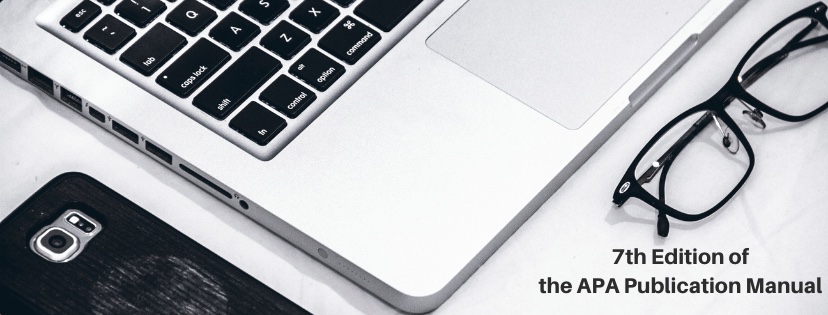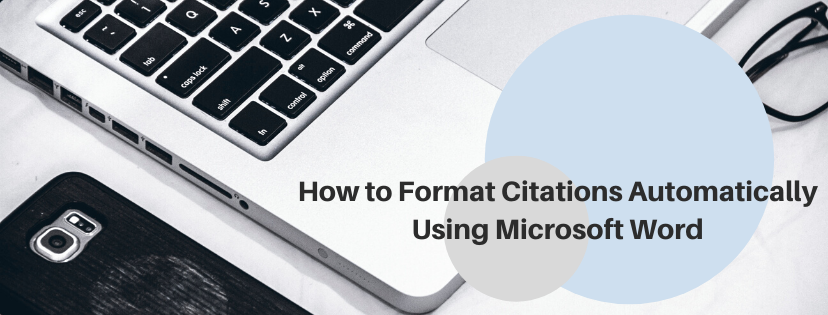MLA is considered one of the most popular and most used citations and referencing styles in academic writing. This quick guide provides the basic rules for MLA in-text citations and reference list for academic papers and essays.

Modern Language Association (MLA) is considered one of the most popular and most used citations and referencing styles in academic writing and MLA style is one of the most commonly used styles to cite sources within the language arts, cultural studies, and other humanities disciplines in the academic field. The latest version of the MLA manual (9th edition) offers several examples for the general format of MLA papers, in-text citations, and the Works Cited page. This quick guide provides the basic rules for MLA in-text citations for academic papers and essays.
An MLA in-text citation involves the author’s surname and a page number in parentheses. For instance, when you have a source with two authors, cite both names. When you have a source with more than two authors, give only the first name of the author and add “et al.” Take note that if the cited text involves multiple pages, you need to mention the full-page range. When you have a source with multiple non-consecutive pages at the same time, you should separate the page numbers with commas.
|
Number of authors |
Example |
|
1 author |
(Williams 67) |
|
2 authors |
(Wan and Lawrence 156–158) |
|
3 and more authors |
(Alison et al. 59, 34) |
You need to insert parenthetical citations after the relevant paraphrases or quotes but before the period. You will only need to add the page numbers in the text if you have already mentioned the name of the author in a sentence.
Basic MLA principles to keep in mind:
If there is only one author, the format of in-text citation will be (Tennyson 57)
If there are two authors, the format of in-text citation will be (Tennyson and Browning 57)
If there are three or more authors, the format of in-text citation will be (Tennyson et al. 57)
When you have a relevant source with no author, you can use the first few words from the title rather than inserting the surname of the author. Any article ‘‘A,’’ ‘‘An,’’ ‘‘The’’ is not countable. Make sure that you are providing sufficient words that recognize the sources you have used.
Example:
Areas in and around North America are likely to emerge as global warming hotspots. This has come to our notice because this region has accessible data and great monitoring capability. . . ("Impact of Global Warming").
In the above-mentioned example, there is no author, so the few words from the title are taken in the citation. Note that you also need to mention the full title on the cited page at the left margin.
Parenthetical or inserted citation on the cited page helps the readers recognize all the information and sources you have mentioned in your research paper.
If the cited page involves many entries under the same author, you have to distinguish or highlight these sources in the in-text citation. You can also use shortened titles to distinguish the sources.
Example:
Hume, Robert D. "The Economics of Culture in London, 1660–1740." Huntington Library Quarterly: Studies in English and American History and Literature 69.4 (2006): 487–533. Print.

If you want to differentiate between different authors who have similar surnames, you can utilize the initials of the authors. Or even if you find that the initials are identical, you need to use the full first name.
Examples:
(R. Browning 27), (E. Browning 40)
When you are collecting information from similar sources and place them in the same row without using any other information from the different source in between, for the first time, you can insert the full-text citation. For the second time, you can only use the page number.
Example:
Cell biology emphasizes the function of a cell and its structure (Smith 15). The primary idea behind discussions presented by cell biology is that cells are fundamental units of life (17). Many eminent scientists have made a remarkable contribution to the evolution of cell biology. Mattias Jakob Schleiden and Theodor Schwann, for example, were scientists who formulated cell theory in 1838 (20).
Suppose a source doesn’t have any page number, but you find that it is divided into several parts with numbers, in this case, you can just use the number to identify the relevant sources. The numbers can be anything including chapters, scenes, an article from the constitution, etc. Well, suppose there is no numbering system; in this case, you can cite the author’s name. Make sure that you won’t use any numbers if the numbers are not properly included in the sources.
Examples
"Three phases of the separation response: protest, despair, and detachment" (Garelli).
"Nutrition is a critical part of health and development" ("Nutrition").
Note: Suppose there is no numbering system and you have already mentioned the author’s name in the text; in this case, you don’t need to insert any parenthetical citation.
Assume that you have to cite different sources in a similar in-text citation; in this case, you can separate them using a semicolon.
Example:
(Smith 42; Bennett 71).
Note: Using references and citations is usually a difficult process. Students may seek assistance from expert proofreading and editing to get their use of the references and citation reviewed.

If you are looking for someone who can help you utilize MLA referencing and in-text citations in your research paper seamlessly, Best Edit & Proof is your ultimate destination. Our experienced editors proofread your assignment and make necessary changes. Our editors holding master and doctoral degrees offer customized proofreading and editing services to ensure ultimate accuracy in your assignment. Knowledge and expertise have made us one of the most reliable proofreading services. If you need help in MLA referencing and in-text citations, feel free to contact us.
Have you completed writing your manuscript? Do you want someone to review the entire article and make necessary changes if required? If yes, we bring the most trusted and efficient editing and proofreading services near you. At Best Edit & Proof, our experts will edit and proofread your papers to make necessary changes.
Best Edit & Proof expert editors and proofreaders focus on offering manuscripts with proper tone, content, and style of academic writing and also provide an upscale editing and proofreading service for you. If you consider our pieces of advice, you will witness a notable increase in the chance for your research manuscript to be accepted by the publishers. We work together as an academic writing style guide by bestowing subject-area editing and proofreading around several categorized styles of writing. With the group of our expert editors, you will always find us all set to help you identify the tone and style that your manuscript needs to get a nod from the publishers.
You can also avail of our assistance if you are looking for editors who can format your manuscript, or just check on the particular styles for the formatting task as per the guidelines provided to you, e.g., APA, MLA, or Chicago/Turabian styles. Best Edit & Proof editors and proofreaders provide all sorts of academic writing help, including editing and proofreading services, using our user-friendly website, and a streamlined ordering process.
Kindly visit our order page if you want our subject-area editors or language experts to work on your manuscript to improve its tone and style and give it a perfect academic tone and style through proper editing and proofreading. The process of submitting a paper is very easy and quick. Click here to find out how it works.
Our pricing is based on the type of service you avail of here, be it editing or proofreading. We charge on the basis of the word count of your manuscript that you submit for editing and proofreading and the turnaround time it takes to get it done. If you want to get an instant price quote for your project, copy and paste your document or enter your word count into our pricing calculator.
If you need support for editing and proofreading services, contact us. You can also e-mail us or use the 24/7 live chat module to get direct support. We have a 24/7 active live chat mode to offer you direct support along with qualified editors to refine and furbish your manuscript. Alternatively, you can text us through our WhatsApp business support line.
Follow us on Twitter, LinkedIn, Facebook, Instagram, and Medium.
For more posts, click here.
Do you like this article? Make sure to share and subscribe!
This quick guide discusses the basic rules for MLA in-text citations for academic papers and essays. To give you an opportunity to practice proofreading, we have left a few spelling, punctuation, or grammatical errors in the text. See if you can spot them! If you spot the errors correctly, you will be entitled to a 10% discount.
How to Cite Sources in APA Referencing Style | With APA 7th Edition Update
30.11.2020
Importance of Citations in Academic Writing
05.03.2022
How to Use ‘‘et al.’’ in APA Style (7th Edition)
28.11.2020
MLA Paper Format: How to Format a Paper in MLA Style
31.05.2021
How to Format DOI in APA Style (APA 7th Edition Update)
29.11.2020
APA Manual 7th Edition: The 9 Most Important Changes
29.11.2020
Importance of Academic Referencing and Citing
19.11.2020
How to Cite eBooks in APA Style (7th Edition Update)
21.12.2020
How and When to Use ''et al.'' in APA In-Text Citations
27.11.2020

The purpose of APA style is to uniform use of elements such as selection of titles, headings, subheadings, citation of references, tone, punctuation, and abbreviations, presentation of numbers and statistics, formatting of tables and figures, and many other elements that are a part of the manuscript. The APA style consists of in-text citation and reference list entry.
Continue Reading
Properly formatting citations and references has always driven researchers crazy. With Microsoft Office Word, though, the process is streamlined to the point of almost being automatic. Microsoft Word automatically generates a bibliography from the sources you used to write your manuscript. Each time you add a new citation to your document, This handout is going to show you how to add citations and bibliographies to your Word documents and how to format references automatically using the Microsoft Word References tool.
Continue Reading
The American Psychological Association (APA) introduced the 7th edition of the APA Publication Manual in 2019 and replaced the previous one, the 6th edition. Since then, several things have changed. The 7th APA edition updated citing ebooks as well.
Continue Reading